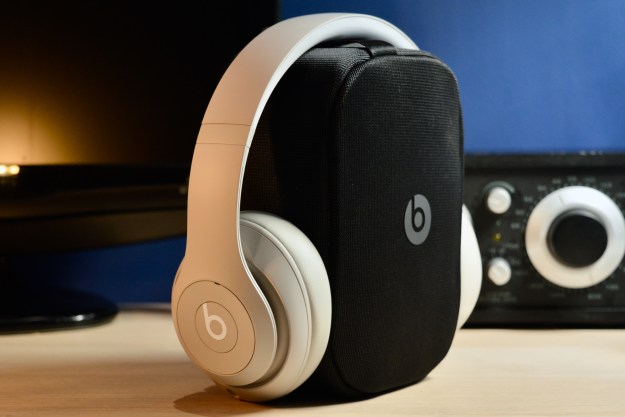It’s no surprise that the uber-hyped new Marvel blockbuster Avengers: Age of Ultron pushes the boundaries of film technology to pack in all kinds of awesome: countless super heroes onscreen at once, a fully CGI bad guy, and a freaking floating city, to name just a few of the feats. However, as usual, while the visual effects get all the glory, it takes just as much state-of-the-art sound technology to make this movie sing. In the video above, Sound Designer Christopher Boyes takes us through some of Age of Ultron’s sonic magic.
Things have certainly changed from the days of Foley artists tapping shoes on 2 x 4s, and flapping saws to make thunder. In the digital age, each character has his or her own sound profile, crafted in the studio to create a unique sonic footprint for our ears to grab onto. Take Aaron Taylor-Johnson’s supersonic speedster, Quicksilver, who moves so fast you can’t actually see him. To make his movements feel more real, Boyes designed thousands of different “fast sounds” that use doppler effects and a “percussive stuttering” sound, to follow Quicksilver’s trail.
The Hulk has some issues in the new film, which present their own sonic challenges, and these escalate when Tony Stark has to break out the Hulk Buster suit. To match the moment, Boyes had to reimagine Hulk’s sonic profile to be even more intense and angry. The video shows us the ProTools tracks (the standard studio software used to mix and record sound for movies) as the recordings of metal, concrete, and screams of the green rage monster collide with the colossal metal suit, disintegrating the surrounding battle front.
Boyes says the most difficult challenge of the film was actually creating Ultron’s voice, as the designers worked tirelessly to make the basic James Spader vocal track more robotic and ominous. Boyes got help from two different sound designers on the film just to make Ultron’s voice work. And it’s not all just high tech, either. In order to make the metallic sounds of Ultron’s general movement, Boyes recorded a special ball bearing in hundreds of different tracks, all of which came together over an entire year just to find the sound of Ultron’s swagger.
But perhaps the most impressive leveraging of technology comes from Boyes’ utilization of Dolby’s new Dolby Atmos surround system, which offers up to 128 different autonomous channels that can be independently controlled for incredible sound immersion. Boyes used Atmos to full effect to create (what else) a gigantic floating city. The system allowed Boyes to draft an incredible level of pressure in the bass, building out a realistic fissure of gargantuan proportions without the need of simply raising the volume, and blasting you out of the theater.
If you’re looking to see the film — for the first time, or another ride — apart from checking whether or not the theater you’ll attend has 3D, or stadium seating, you may also want to see if the theater’s sound is up to snuff. Dolby Atmos theaters will be your best bet at present, but any enhanced sound, such as Cinemark’s “XD” which offers custom surround sound placement, will be key to helping you truly enjoy the movie’s sonic impact in all its glory. Trust us, when the sound is at its optimum, you’ll notice the difference.


